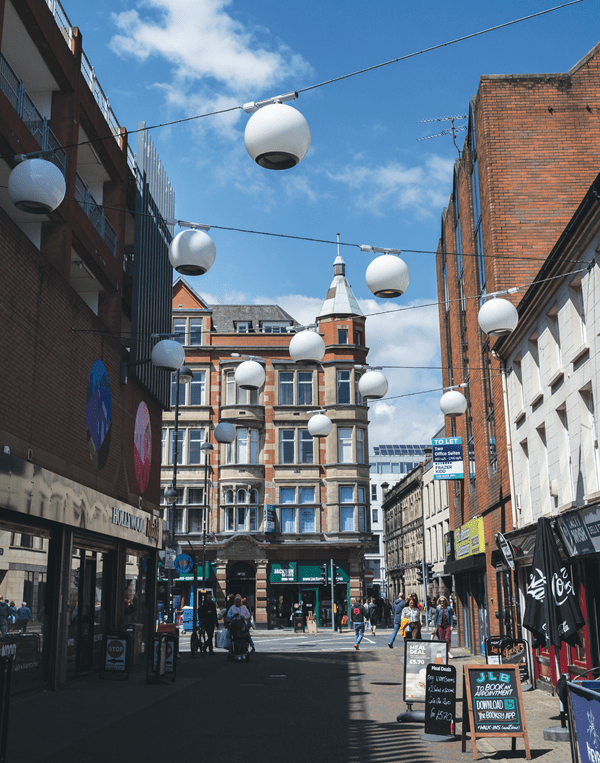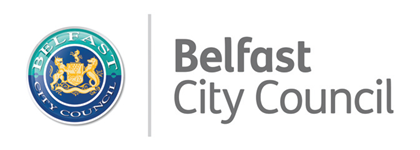The COVID-19 Recovery Revitalisation Fund
Published: April 2023
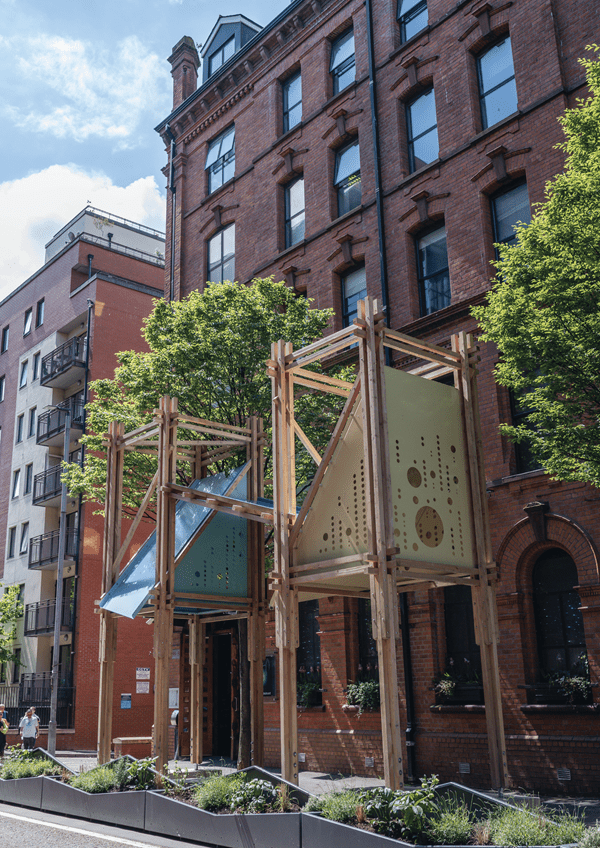
In order to recover from the pandemic, Belfast City Council recognised that there would need to be a range of sustained and creative interventions which would reshape how the city is used, to increase footfall and spend in the city centre, and to increase connectivity in local neighbourhoods and with the wider city whilst prioritising public safety.
The Council received £4.039m capital funding through the Department for Communities Revitalisation Programme to support a variety of projects and programmes across the city. These projects which were identified and led by community organisations, the Business Improvement Districts (BIDs) and local businesses were intended to provide the public with confidence that measures have been put in place to ensure their safety and to encourage people to re-engage with community and city life, and to provide clear and visible changes in the local area.
The funding provided the Council and local businesses with the chance to harness people’s renewed interest in spending time outdoors, and in walking and cycling. Most importantly the funding meant that businesses and community organisations could be supported to re-open safely and with confidence, and to adapt how they operated to suit the changed times.
The COVID-19 Recovery Revitalisation Programme had 4 broad strands
- Grants for businesses to purchase equipment to help them continue to trade or to trade safely
- Grants for community/business clusters for small capital projects
- Grants to the Business Improvement Districts for small capital projects
- Council led initiatives to encourage people safely back into the city
The initiatives supported were many and varied and were located across the city. With the overarching aim of promoting recovery from the pandemic, the projects provided new and/or improved community spaces, innovative locations for socialising outdoors, attractive streetscapes and much more.
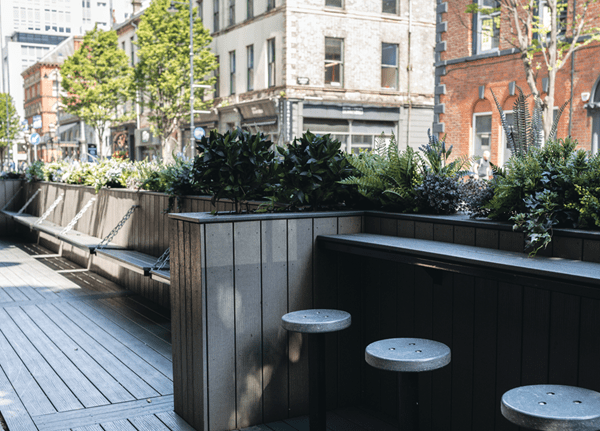
Open for Business
Building confidence was key to the reopening of the city as it emerged from the pandemic. Through the funding, the Council was able to develop a communication and marketing campaign which would support the business sector and encourage shoppers to return.
To help people feel safe and confident to re-enter retail outlets within the city centre it was important to demonstrate effective management of social distancing requirements, management of queuing and pedestrian flows. Through signage and branding about social distancing measures, the campaign increased the confidence of people coming to the city. City safety messaging encouraged the use of masks, keeping a safe distance and effective handwashing techniques.
Vital to the success of this initiative was effective engagement with businesses and stakeholders from across the city to explore what steps were needed to encourage safe social distancing and for existing businesses to reopen effectively. #staysafebelfast and the stay safe confidence mark provided clear, simple and visible evidence of the commitment of city businesses to the safety of their customers, as did the placement of hand sanitising units in key areas which were wrapped with city branding.
What began as a programme of actions to provide public information, as time went on became a mechanism to instil confidence in residents, consumers and visitors.
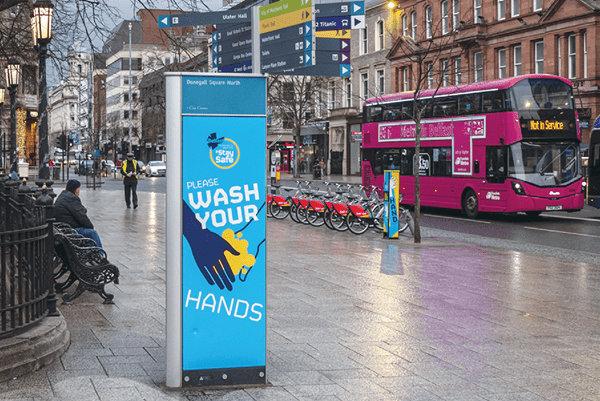
Covid Recovery Grants
Belfast City Council awarded over £800,000 in grants to more than 450 businesses in the city. The purpose of the grants was to support businesses to re-open or continue to operate safely during and after the pandemic.
Businesses ranged in size from small local shops to much larger service organisations, from the relatively new to the well established. What all the businesses who sought and secured support had in common was the need to take proactive steps to ensure their customers and staff had confidence in their safety.Funding was invested in items ranging from hand sanitising stations to perspex screens, and IT equipment to fogging machines, whatever equipment businesses found they needed in order to continue to trade through and beyond the pandemic. As businesses were already under pressure, many would not have had the resources to purchase these items without funding. And without these items they would not have been able to trade safely.
The funding investment has helped to secure the sustainability of businesses across the city which can begin to thrive again. 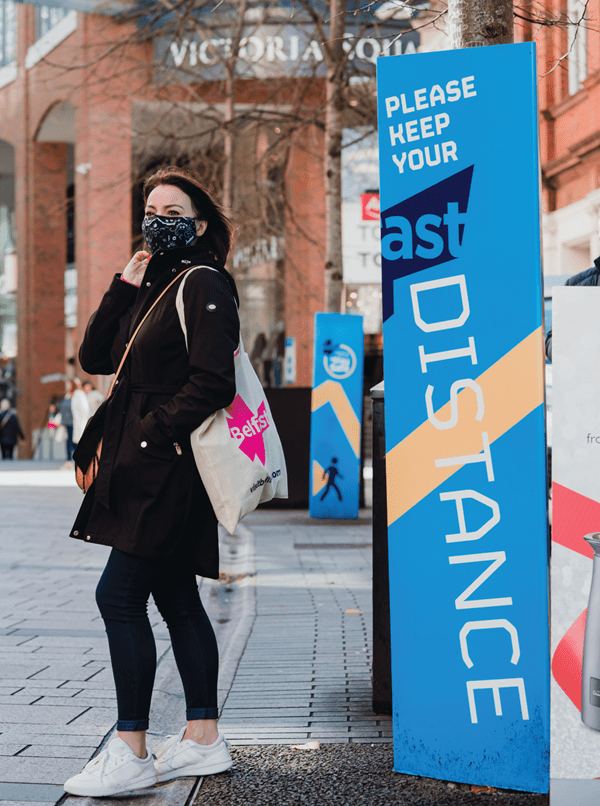
Outdoor dining and socialising
Hospitality has been one of the sectors most affected by lockdown and government restrictions throughout the coronavirus pandemic. Restrictions ranged from forced closures and limits on opening hours, to rules on the number of people that could meet indoors and table-service requirements. While forced closures and restrictions impacted customer demand and business revenues, hospitality businesses continued to face fixed costs such as property and staff costs. Support schemes specifically targeted to the hospitality industry included the Eat out to Help Out Scheme and a temporary cut to VAT.
In spite of our inclement climate, outdoor dining has become increasingly popular, in part due to the increased safety many people feel whilst socialising outdoors, and in more ventilated, space. Temporary changes to alcohol licensing and planning law for pavement licences made it easier for restaurants and cafes to seat and serve customers outdoors, which has meant they could somewhat offset restrictions on the numbers of people they could have indoors.
Fountain Plaza
The Fountain Plaza project involved the installation of large parasols, privacy screens and planters on the pavement area on Fountain Street. The creation of this outside dining space enabled the restaurant to trade at 50 per cent capacity while still adhering to social distancing requirements. Since the scheme has been implemented it has rejuvenated the area, with other businesses also using their outside spaces to make Fountain Plaza a vibrant place to be and encourage people into the area to socialise.
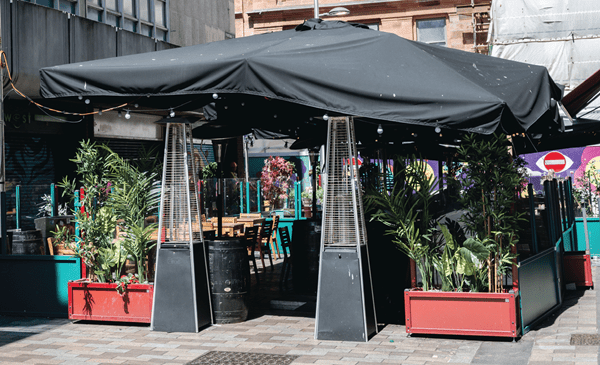
Flaxx Social Space, Brunswick Street
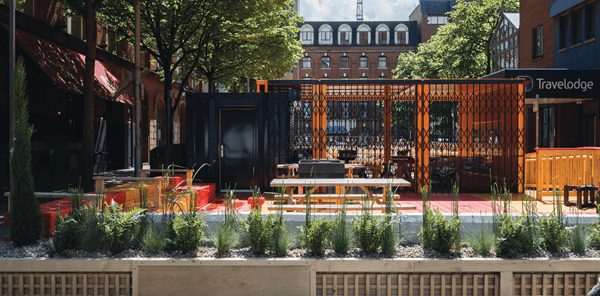
The new Flaxx Social Space in Brunswick Street, which was delivered through funding to the Linen Quarter Business Improvement District, has created a contemporary space where people can meet, partake of some refreshments and enjoy the entertainment on offer. This innovative development which includes a pedestrianised section, the installation of outdoor seating, lighting and a small stage will provide a relaxing environment with on site hospitality until 11.00pm seven days a week. Located in the heart of a busy commercial district it will give office workers and visitors to the city a vibrant and comfortable space to rest a while. Already popular, it is anticipated that spaces like this will bring vibrancy to parts of the city centre where people don’t usually spend much time and act as a catalyst for more regeneration in the surrounding areas.
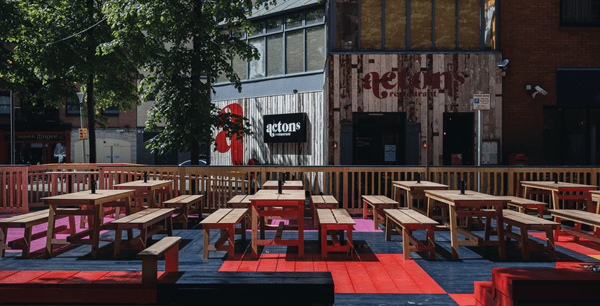
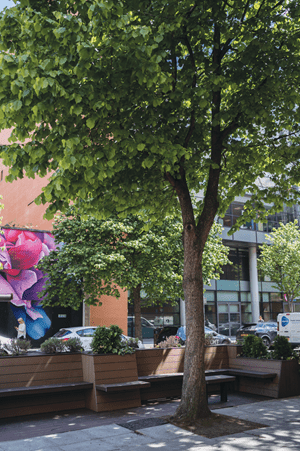
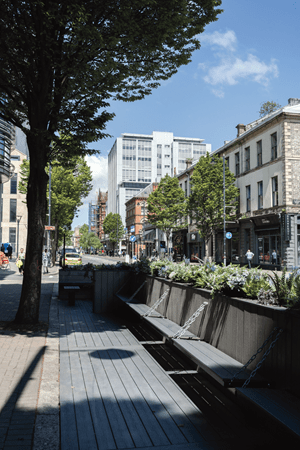
Spaces to rest and enjoy
Parklet (n) a small seating area or green space created as a public amenity on or alongside a pavement, especially in a former roadside parking space (Oxford English Dictionary) Across the city centre and beyond, parklets are providing visitors with an inviting spot to take a seat, grab a coffee and watch the world go by. Some are located near small hospitality businesses and provide an outdoor “extension” to their dining areas, others are a spot for an office worker’s packed lunch or a takeaway coffee. These little resting points which can be found in Bedford Street and Linenhall Street add character to the streetscape of the city.
Ballynafeigh Parklet
Ballynafeigh Community Development Association is based on the Ormeau Road in South Belfast. Its imposing building opposite Ormeau Park has been at the heart of the community for decades, but when the pandemic struck, it, like other community buildings across the city, was forced to close.
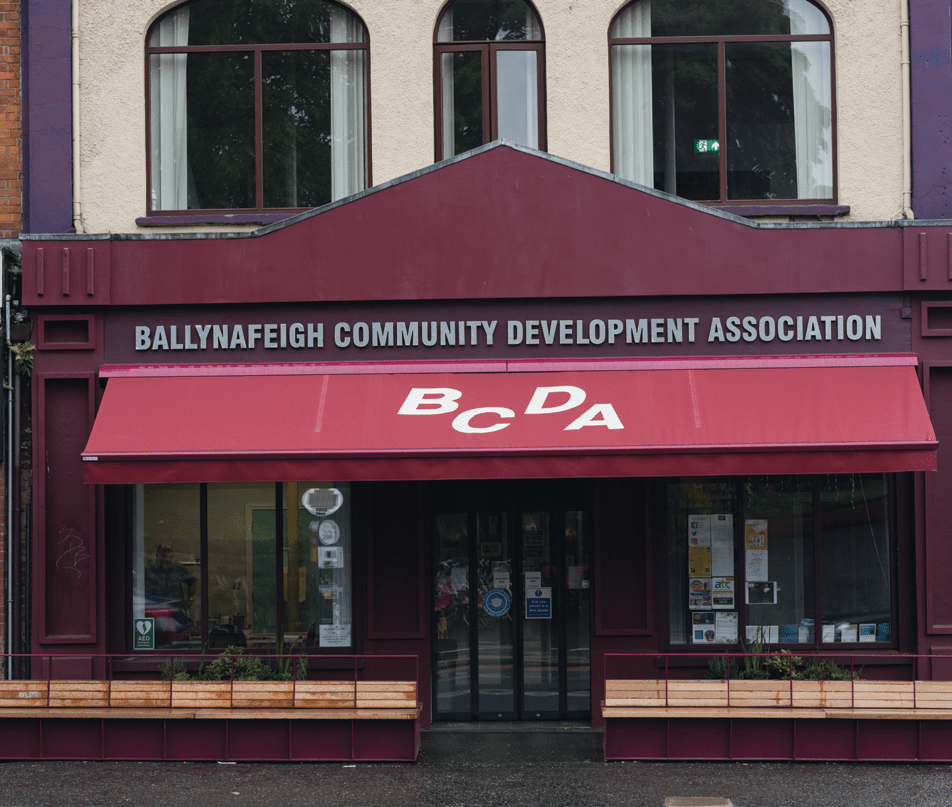
As BCDA prepares to re-open its premises to the public, the bespoke parklet in front of the building is a way to extend the community connections which happen inside the building to the outside. It provides not just a place to sit, but also meeting point, a starting point for a walk or a cycle, or a resting place to enjoy a takeaway coffee. Enjoyed by old and young alike it transforms what was just a wide pavement into a community space in the truest sense of the term.
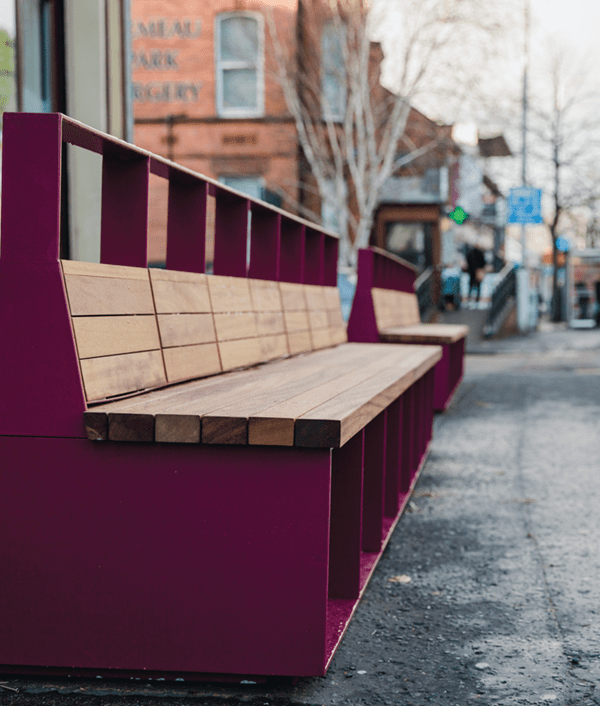
- Sailortown Parklet, City Centre
- Adelaide Street
- St James’ Farm, West Belfast
- Refresh Cafe, Newtownards Road
- Union Street seating area
- Roar and Explore, Dunmurry
- O'Donovan Rossa GAC Belfast
- The River Box, Titanic Quarter
- Portview, East Belfast
- St John’s Nursery, Falls Road
Community Spirit and Volunteering
The COVID-19 pandemic had a huge impact on communities, but not all of those impacts were negative. Across the city, as people found themselves furloughed or no longer losing time to a daily commute, they had more time to volunteer in their local areas. The Business Cluster and Community Grants Programme provided the financial support for local projects which then enabled local people and groups to make changes in their community.
Sans Souci Residents Association
The residents of Sans Souci in South Belfast felt that the Malone Road had lost its appeal as place to walk. Dominated by concrete and commercial premises the local residents felt the area lacked colour and greenery, and from this the Malone Gateway Project was born. Mobilising volunteers who included residents, university students and the staff of local businesses, the Malone Gateway is a community planting project stretching from Methodist College to the Queens Elms. Supported by local businesses, and implemented by local people, trees, shrubs and plants have been placed at a number of locations along the road.
Not only has the project brought a splash of colour, and improvements in the environment in the area, it has also improved relationships between the businesses in the area and local residents. There is a shared sense of owning and caring for the local environment to make it a pleasant space for everyone.
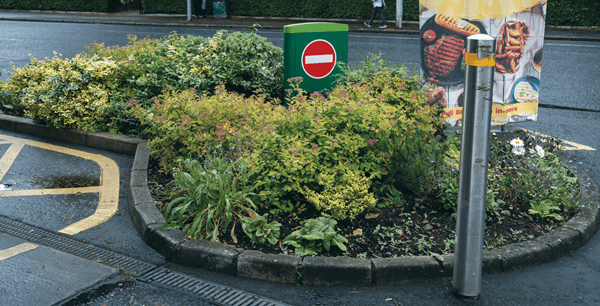
Lower Malone is a much greener area with a variety of unusual trees and shrubs planted along the road, wildflower seeds planted around trees brought out 20 volunteers to clear and sow. People stop and talk and take walks along the road. A rampage by a vandal this week brought out the local community to fix and replant. (Sans Souci Residents)
We have created a social space for the community which will encourage growing activities to take place as well as educational activities.
(Patrick Sarsfields GAC)
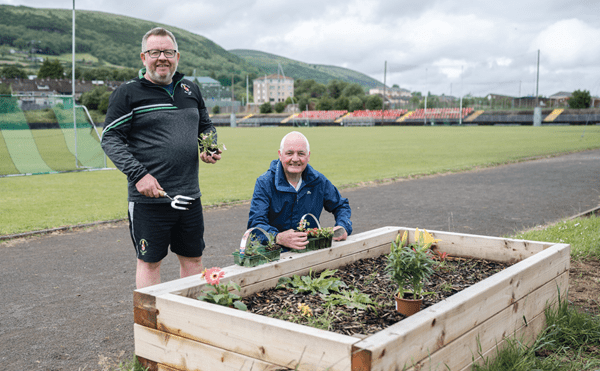
Volunteers planting out new beds at Patrick Sarsfields GAC
North Belfast Working Men's Club
Lockdown restrictions had had a negative effect on membership at North Belfast Working Men’s club, so in order to get members back, an outdoor area was created with furniture, planting and landscaping, to create an attractive and useable outdoor space. Other improvements included enhancements to the bowling green and new tarmac and ramped access. The funding has enabled the club to provide disabled access to an underused but unique resource. More importantly, it has energised club members who, having missed the club during lockdown, volunteered their time to clean, to lay stones and to paint as part of this project Having enabled better access to the Club, and facilitating more and better family events, the Club Trustees have seen more people attending the club from across age groups. As more people become aware of this valuable community resource, which there is nothing similar to in the surrounding area, the number of users and bookings has increased helping to sustain the club, which had been at risk of closing, into the longer term.
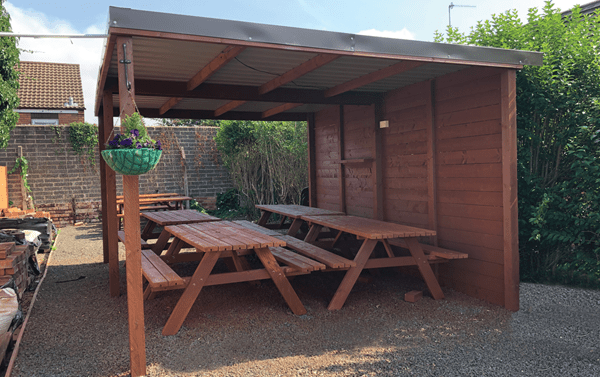
A Sense of Place
By uncovering and highlighting elements of local history, many of which were long forgotten, community projects can reconnect residents with their local heritage. Through the revitalisation funding, little used spaces provided a canvas to tell local stories and to create spaces which are owned and used by local people.
Ballyhackamore Street Art Installations
The aim of this project was to celebrate Ballyhackamore’s rich heritage and modern day personality through street art, and to create a revived sense of identity for the neighbourhood.
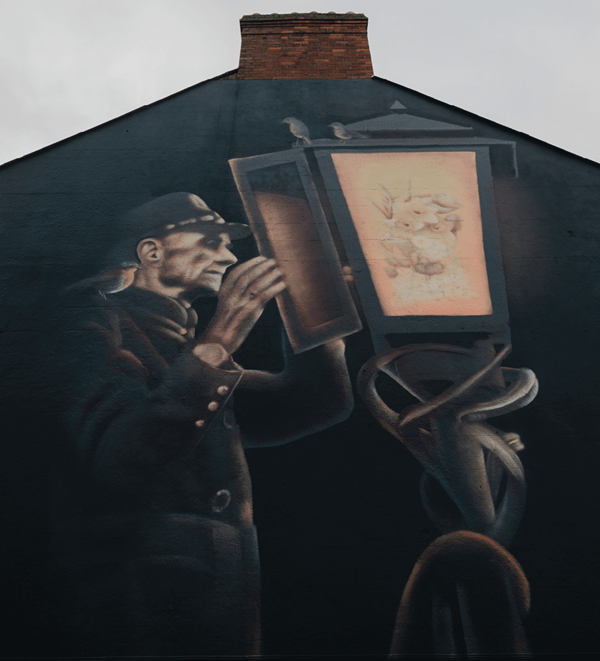
The four art installations and complementary motifs are the first time Ballyhackamore’s heritage has ever been celebrated across its streetscape. Before this project very few people were aware of Ballyhackamore’s rich horticultural heritage. The ‘Lamplighter’ installation beside Kirkpatrick Presbyterian Church depicts a lamplighter tending to his lamp with flowers glowing from the centre. The artist that worked on this piece has also installed four smaller flower motifs throughout Ballyhackamore, all relating back to the nursery which once stood where Bloomfield Collegiate is now located.
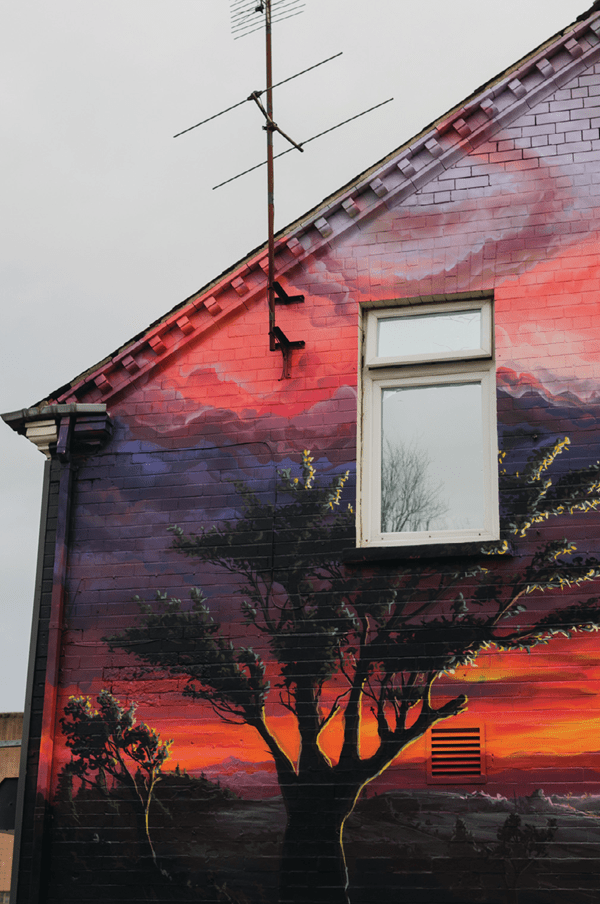
By celebrating the area’s heritage across its streets, the project engages the wider public with these fascinating stories and acknowledges Ballyhackamore’s unique, and often forgotten, identity as a village rather than simply an arterial route into Belfast City Centre.
In addition, the project has acted as a catalyst for further development and led to further street art installations funded by local businesses, as well as initiatives to remove unsightly graffiti.
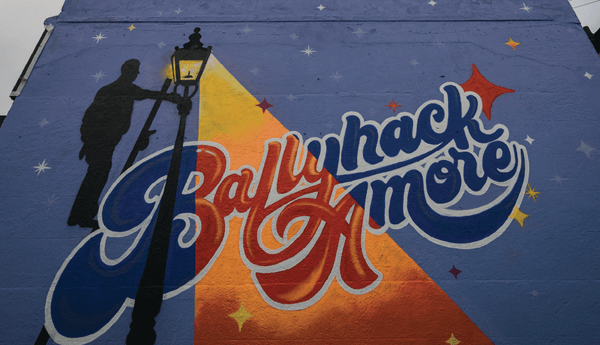
The Flax Street Courtyard Local History Regeneration Project
The Flax Street project centred around a local history project explaining the story of the Mill industry and based on ‘The women who made Belfast’. The project allowed the group to highlight the women and the significant role they played in the local area. A number of history boards were installed telling the stories of the Mills and the part the local women played in their development.
The wider community and local groups were fully involved in the planning and design of all aspects of the project. This gave local residents and groups ownership which can be seen in how well used the space is. Lighting was installed, transforming the area from a dark, unwelcoming and unused space into a warm and inviting space for all users. Planters helped to transform the look and feel of the area, and the local nursery children use these to learn about plants and herbs. Seating was installed which is used by local groups at lunch time and youth groups in the evening, as well as being a meeting point for local people.
The community, including children and youth groups now view and use the area as a space of their own.
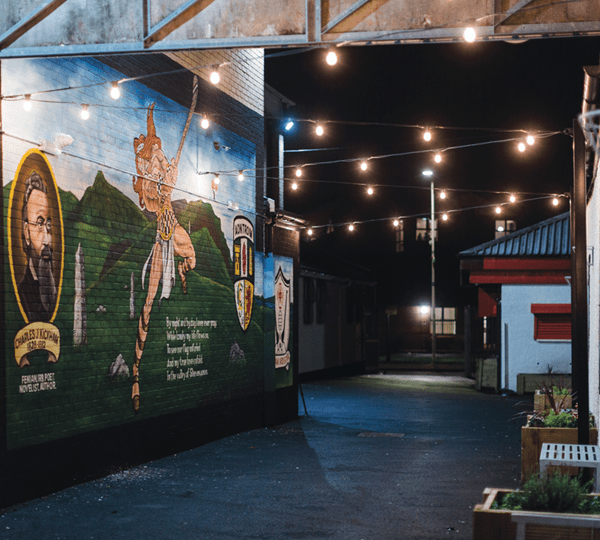
We believe that our project has been very successful in bringing about the changes we wanted to achieve. What was once a dark and unused courtyard yard has now been transformed in a bright, safe and well used community area, the change has been nothing short of remarkable. (Cairde Ard Eoin)
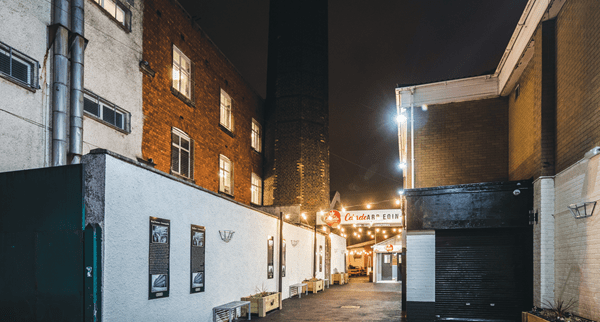
Enhancing Community Facilities
A large part of the Covid Recovery Plan was in enabling existing community facilities to build on the positive changes which had resulted from the pandemic. These included a greater interest in spending time outdoors, regular exercise and an increased appreciation of the value of community.
Outside of the city centre, the programme supported projects which enhanced existing community facilities. This included community gardens, new pathways and benches, a semi permanent youth structure and more. The purpose of all of these investments was to strengthen communities as they emerged from covid. The projects provide spaces where people can come together as a family, as friends or as a community. They connect people in very urban areas with nature, and they provide space for people to connect with one another. Such projects are a vital element of the recovery and revitalisation of the city.
The new community garden at Saints Youth Club is truly owned and valued by the young people who regularly attend the centre. Including benches, landscaping and safety fencing, perhaps the most important element of the garden is the planters and flower beds.
Young people who come to the centre have a freedom in this new outdoor space which they don’t have when indoors in the youth centre. They are learning new skills in planting and growing plants and vegetables and herbs. They are promoting their garden to the local community, asking for support and donations and committing to giving the produce they grow back to their local community.
The wellbeing benefits of the garden are already being seen by youth workers who describe how the young people thrive in the garden and how the connection with nature can be grounding for those who might be struggling.
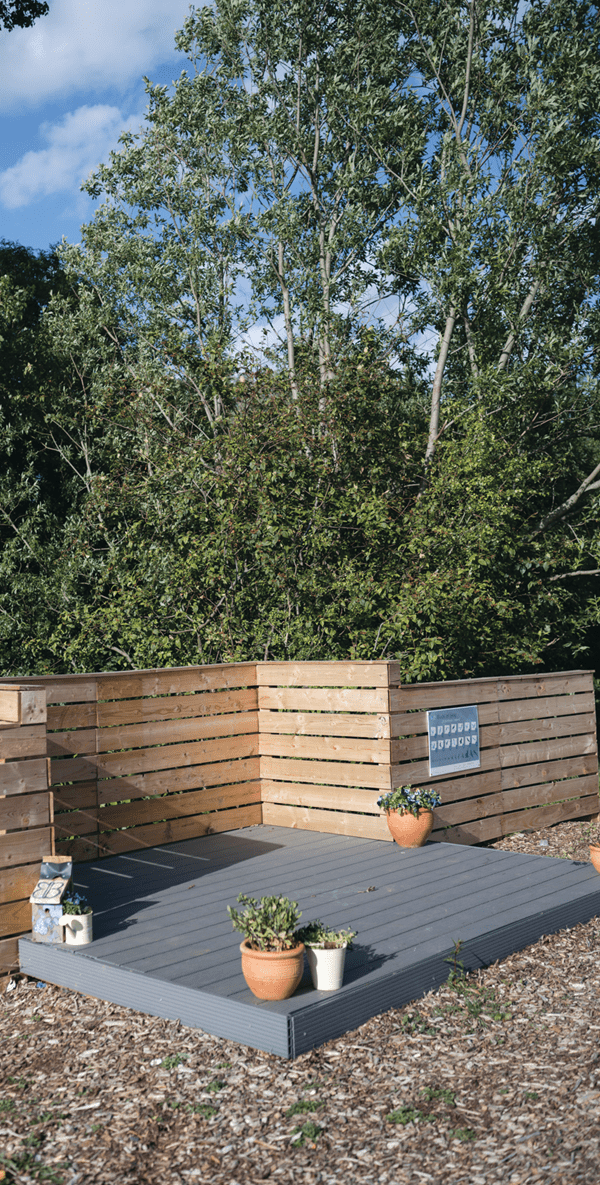
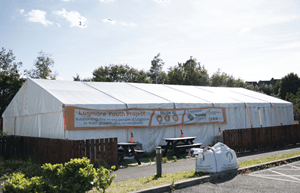
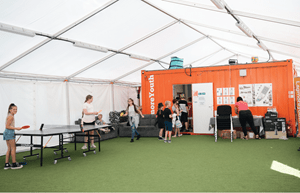
Lagmore had a large waste ground that was left empty and rubble lying everywhere. Thanks to the grant a new temporary facility has been constructed on the waste site and caters for over 100 people per day morning, noon and night 7 days a week with a further waiting list of young people already on a waiting list to access the new facilities we hope to be able to offer even more services when the new academic school year begins. (Lagmore Youth Project)
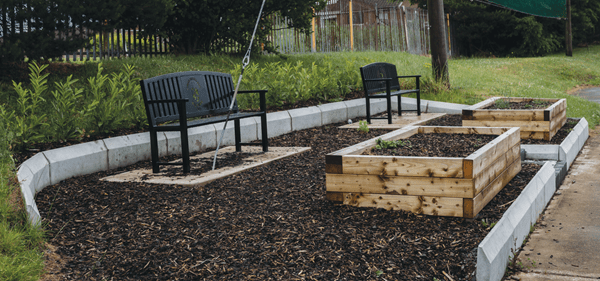
Patrick Sarsfields GAC
We have been able to create two tranquil areas that people can use when visiting the club either as members, spectators, visitors or local community. (Sarsfields GAC)
The project has been and will continue to be a great success and a positive initiative brought into our community to continue to promote positive mental health and wellbeing to all with the help of the funding from this grant the farm will continue to be a great source of community development and involvement.
(St James’ Farm)
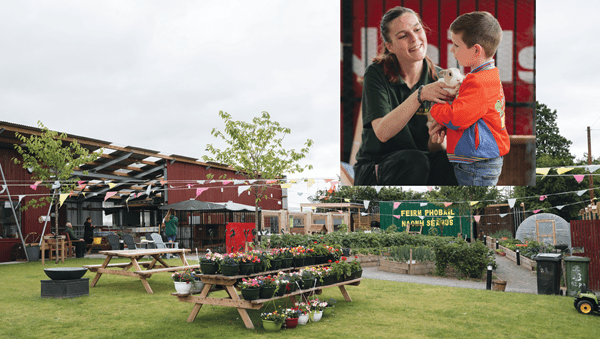
Sustainable Travel
Awareness of the importance of wellbeing is probably one of the more far-reaching outcomes of the COVID-19 Pandemic. Throughout lockdown people were encouraged to regularly get outdoors and to walk, run and cycle. For many, having formed these habits, they are keen that they continue. Investing in pedestrian and cycling infrastructure, has been an important part of the Covid Recovery Strategy.
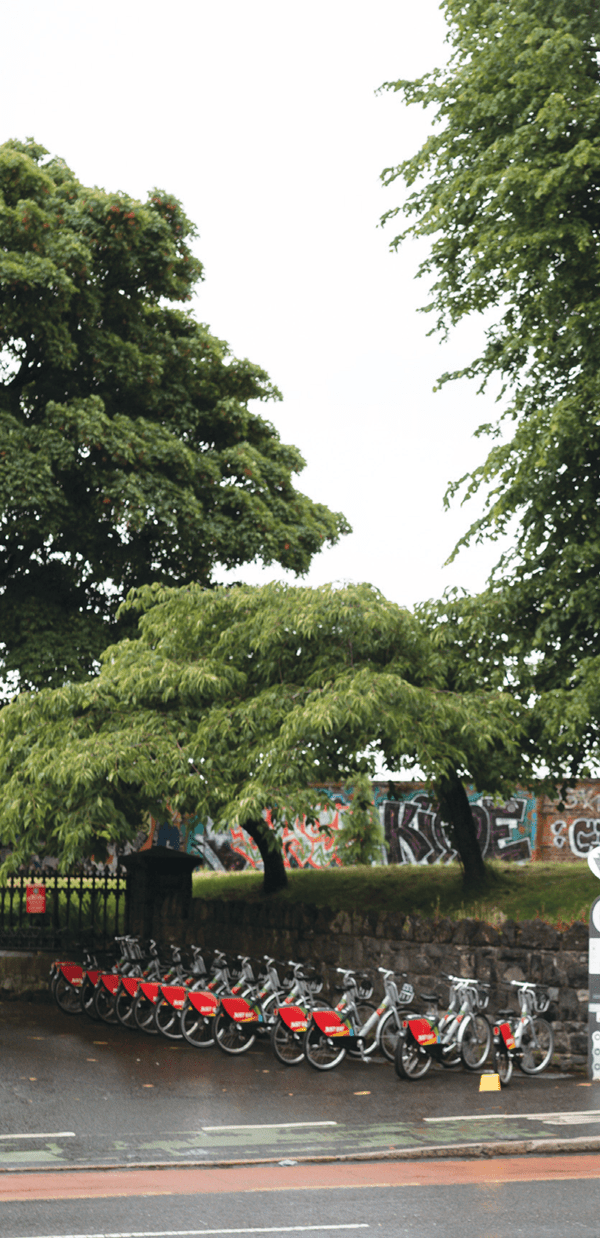
New cycle hubs at Queens and Ulster University campuses provide students and faculty with access to secure cycle parking and repair. The hub at Cathedral Gardens will also provide local families with access to affordable bikes and encouragement to cycle in the local area. In addition, a refresh of the Belfast Bikes and the planned addition of e-bikes provides the infrastructure across the city centre to encourage cycling around the city.
The River Box
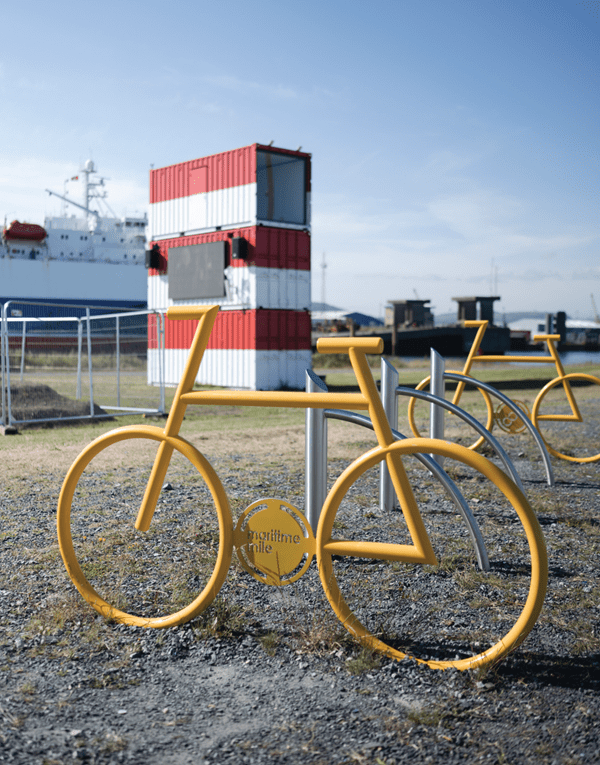
The River Box is a new three story audio visual experience on the Maritime Mile. With benches and picnic tables, and a large LED screen it is a new attraction in the Titanic area. And conscious of how many people now travel the Maritime Mile by bike, the new installation includes a bespoke cycle rack.
The first of its kind in the area, the cycle rack is both functional and Instagrammable. With the Titanic Centre as a backdrop it will become a go-to point for cyclists in the area and provide a place to rest, to meet others and to enjoy the occasional entertainment which is on offer.
The bike rack is much needed and can be replicated across the Maritime Mile establishing the waterfront as a great place to cycle with good bike infrastructure in place. Now in situ … we see that it is getting great use. (Maritime Belfast Trust)
The Covid-19 Recovery Revitalisation Programme invested over £4m of funding in the city to deliver the projects listed
Physical interventions and streetscape projects
- Ballynafeigh Community Association, South Belfast, parklet type space
- Bank Square Traders, City Centre, outdoor seating, lighting and floral displays
- Beanies Convenience Store, Business Cluster Group, North Belfast, signage and lighting
- Belfast Boat Club, South Belfast, an outdoor space with gazebos, benches and seating
- Big Belmont Traders, East Belfast, additional shop front signage and lighting
- Cairde Ard Eoin, North Belfast, heritage project including story boards, seating and lighting
- Castle Street Traders, City Centre, new signage, awnings and lighting
- Cliftonville Community Regeneration Forum, North Belfast, a community garden
- Colin Trust, West Belfast, additional seating, benches and extra bins
- Donovan Rossa GAC, West Belfast, newly surfaced walking route and outdoor gym equipment
- East Belfast Mission, East Belfast, outdoor seating and canopies
- Eastside Partnership, East Belfast, heritage based wayfinding initiative
- Fountain Street Plaza, City Centre, covered parklet area
- Greater Village Regeneration Forum, South Belfast, a sensory community garden
- Hannahstown Community Association, West Belfast, improved outdoor space
- Lagmore Youth Group, West Belfast, a marquee on unused land to offer space for young people
- Lamh Dhearg GAC, West Belfast, new outdoor seating area
- Maritime Trust, City Centre, a cinema screen on containers on the maritime mile
- Mornington Community Centre, renovation works to the back of the building
- North Belfast Working Men’s Club, North Belfast, improved outdoor space
- Orpen Shopping Centre, South Belfast, surfacing improvements and signage
- Patrick Sarsfields GAC, West Belfast, a community garden and soft land scaping
- Portview Trade Centre, East Belfast, outdoor seating and lighting
- Roar and Explore, Business Cluster Group, West Belfast, signage, lighting and seating
- Sailortown Regeneration Association, North Belfast, a covered parklet space
- Saints Youth Club, West Belfast, improved outdoor space
- Sans Souci Residents Association, South Belfast, creative planting project
- St James Farm West Belfast, seating, benches, a chicken coop and polytunnel
- St Johns Pre School, West Belfast, a new outdoor space with play facilities
- The Linen Quarter BID, City Centre, parklet space on Brunswick Street
- Townsend Enterprise Park, West Belfast, improved the outside of their building
- Upper Springfield Development Trust, West Belfast, improved a derelict space
- Workwest, West Belfast, improved outdoor space
- Cathedral Quarter BID, City Centre, Union Street Pedestrianisation
- Cathedral Quarter BID, City Centre, Cathedral Quarter/Warehouse Entry
- Linen Quarter BID, City Centre, 3 parklets, Flaxx social space and interactive lighting at Brunswick Street, tree wrap lighting at Blackstaff Square
- Belfast One BID, City Centre, Church Lane and Bank Square lighting schemes, mural and planting at Cole’s Alley
Initiatives by Council to encourage people back into the city centre
- Public Safety signage and messaging and communication
- Feature Lighting in each of the three Business Improvement Districts
- Christmas animation programme
Sustainable And Active Travel Projects
- Replacement/upgrade of Belfast Bikes
- Covered Citywide cycle stands
- Expanding Belfast Bike network
- Electric Bike Trial
- Expanding Sustainable Transport Hub network
For more information and a full list of supported businesses and projects contact [email protected]
